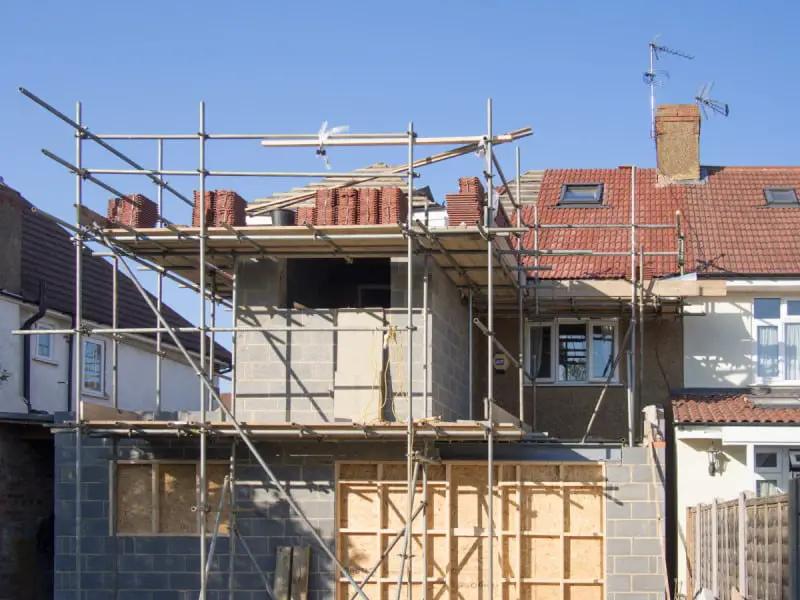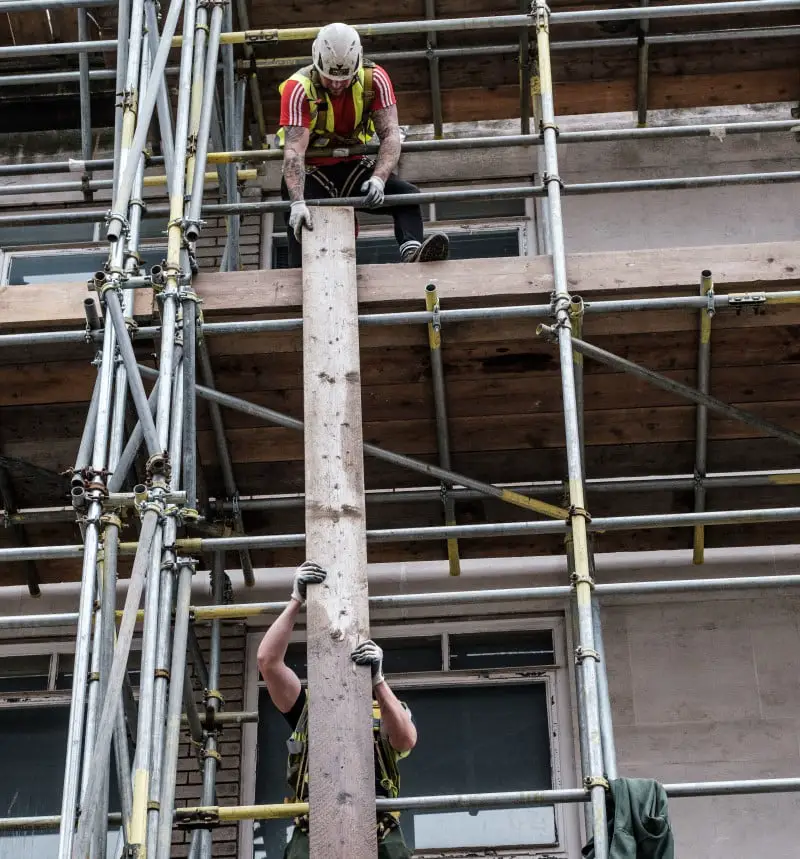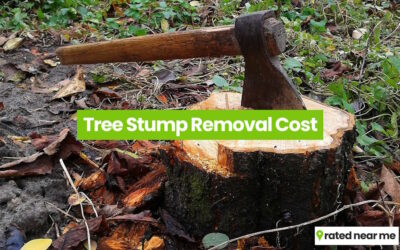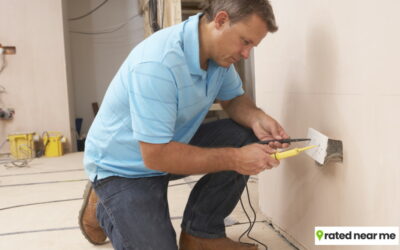Whenever you need any major building or repair work done on your home, you will probably want to erect scaffolding. Scaffolding provides easier access for building contractors (or yourself) when working at a height. It is also essential for everyone’s safety.
Many home improvement projects need scaffolding erected when ladders, or even a scaffold access tower, simply don’t offer good access to hard-to-reach areas.
Scaffolding hire costs can be quite expensive depending on what you need and for how long you need it. However, when you factor in wasted time and the labour costs of a tradesperson running up and down a ladder to complete the work, then suddenly scaffold hire prices won’t seem so high.
Since it is also a safety concern, it’s wise not to cut corners when choosing a scaffolding company. You can always get scaffolding quotes through our free Rated Near Me service.
We have pulled together the cost of scaffolding hire from multiple UK suppliers to show you the average price for different home improvement projects.
We will also cover everything you need to know about scaffolding – from the scaffolding boards, and H&S scaffolding requirements, to the factors which affect scaffolding costs.
Different Types Of Scaffolding
Scaffold is used by contractors when they are working at a height. It is generally considered to be more effective than a ladder since multiple workers can use scaffold at the same time.
It also comes with suitable space for keeping materials and tools at hand to speed up the job – as there is no need to keep climbing up and down a ladder. On top of that, it is also safer than a ladder, since the structure is adequately supported and secured.
Depending on the type of job (i.e. gutter repair job) and the building (i.e. semi-detached house), there are many types of scaffolding to choose from. We discuss these below:
Double Scaffolding
A double scaffold is used when tying (securing) the structure to the building is not possible. It has extra standards (vertical metal poles) erected 1.5 metres away from the main frame. They are then tied together with the help of putlogs. More metal poles (rakers or prop shores) are angled to provide support to the entire structure.
Single Scaffolding
This is also known as the bricklayer’s scaffolding since it is often erected while building walls. To keep this scaffold in place, it is fixed into the wall as it’s being built. Single scaffolding is the most common type of scaffolding used in building projects. This type also keeps the scaffolding costs lower.
Cantilever Scaffolding
Also known as needle scaffolding, cantilever scaffolding is used when the scaffolding structure cannot be erected on the ground because of obstacles in the way. Needles are passed through holes drilled in the wall, and they are used to support the scaffold standards. Angled struts are then used to support the structure from underneath. Cantilever scaffolding is best used in the following situations:
- When upper parts of the building are under construction
- When the ground beside the building has to remain clear
- When there are obstructions which stop scaffolding from being erected on the ground
Suspended Scaffolding
This type of scaffolding is supported from the building roof using chains or ropes (think of a window washer’s suspended platform). It is usually used in tall buildings or structures for repair work such as painting or repointing stonework – as it allows the structure to be moved up or down as the work progresses. Suspended scaffolding requires a lot of safety precautions and is not suitable for all buildings.
Trestle Scaffolding
Trestle scaffolding does not use standard putlogs or rakers. Instead, trestles or tripods are used to support the wooden boards on which workers stand. Trestle scaffolding is easily moved as they are often made of lightweight steel. They are best suited for construction work at lower heights, as they often have adjustable heights between 80cm – 1.6m.
Tower Scaffold
A scaffolding tower can be easily erected and is also very easy to move about (due to incorporating wheels). They are usually made from aluminium pipe and allow workers to reach heights up to 12m if required. They can be used for both outdoor and indoor jobs.
For scaffold tower hire prices check out our free guide.
What affects the cost of scaffolding hire?
Before we discuss how much scaffolding costs to hire, you could of course buy your own scaffolding. But if you are a homeowner who just requires it for a one-off project – that might be a bit excessive.
The better option is to hire scaffolding.
There are many factors that affect the cost of hiring scaffolding. Scaffolding prices vary depending on the length of hire, how much scaffolding is required, where you stay etc.
We have listed the common factors below:
1. Length Of Hire
One of the biggest factors that impact scaffolding hire costs is the length of hire. In most cases, scaffolding is usually hired for six to eight weeks. When you opt for a set period of hire, the scaffolding company will give you a fixed price for the entire period.
If you need to extend the hire period, contact the scaffolding company that you hired from and ask for an extension. Hire extensions are normally charged per week.
2. Height Of Scaffolding
This is quite an obvious one. The higher the scaffolding project is, the more components (for example, more vertical poles (standards), joints and wooden boards) will be required. This along with delivery costs altogether adds to the total scaffolding cost.
It is always a good idea to speak with multiple scaffolding companies for quotes. They will also advise on how much is required for different projects i.e. conservatory scaffolding is going to be a lot less when compared to chimney scaffolding.
3. Number Of Levels
Just like the height of the scaffold, the number of walking platforms directly affects the cost of hiring scaffolding. If more boarded walkways have to be incorporated when erecting scaffolding, the cost will be higher.

For example, if the work has to be done on a small part of a building, say completing a one-storey semi-detached house extension, then one or two walking levels might do the job.
However, if the builders are working up to roof height to complete a loft conversion or do chimney repair work, more walking levels will be required – and this will push up the cost.
4. Number Of Metres (Length around the building)
Scaffolding costs are also dependent on the length of the structure i.e. how many square metres are required for the job. This also affects the length of time it will take to erect it. The smaller the project the fewer square metre of steel scaffolding (and boarding) is required.
5. Location
The location where the scaffolding is to be erected is another important factor that affects the scaffolding costs. In big cities such as London, scaffolding prices will be quite a bit higher when compared to smaller towns or rural areas. This is largely due to getting the scaffolding cost into city centres and there is more local council red tape to deal with.
6. Public Access Licence(s)
This is one of the most underestimated factors when it comes to hiring scaffolding. And it can have a huge impact on the price.
Whenever you have to erect the scaffolding on a pavement or a road, you will need to obtain permission/permits from the local council. This will add to the cost and will also slow down your project considerably Anyone who has dealt with local authorities, knows they don’t move fast.
It is wise to speak with different scaffolding companies as they know the rules & regulations for your area.
Cost Of Scaffolding
The cost of scaffolding is largely dependent on the factors mentioned above. On average, the cost of hiring scaffolding can range from £40 per day to £150 per day.
These prices do not include any additional accessories.
To give you an idea of the cost of scaffolding for different house types, we have included the price range in the following table:
| Project | Cost Per Week |
|---|---|
| 2-bed house | £650 – £1,100 |
| 3-bed semi-detached house | £700 – £1,200 |
| 4-bed detached house | £1,000 – £1,300 |
| Chimney scaffolding | £250 – £820 |
| Conservatory bridge | £300 – £900 |
As you can see from the scaffolding hire prices above, the smaller the house or project the cheaper the price is.
Carrying out a first-floor repair or working on a smaller 2-bed home will require fewer levels and not as much length of scaffold around the house when compared to carrying out a loft conversion on a 4-bed detached house.
Also note, that while the typical hire period is between six and eight weeks, most scaffolding companies will rent out basic scaffolding from one week upwards.
If you only need scaffold for a short period for a quick job such as repairing a few roof tiles or a leaking gutter/downpipe, then it might be worthwhile to consider using an access tower. If you need costs for scaffold tower hire prices – check our guide.
Scaffolding FAQs
When is scaffolding required?
If you are having a roof replaced or a new extension built, having a scaffold system in place really is a necessity.
These types of jobs cannot be completed safely just by using ladders. Using scaffolding increases the efficiency of the builders working on the project, as it gives them a stable platform to temporarily store materials such as roof tiles.
It also means that more than one worker can be on the platform at the same time which improves productivity.
When do you pay for scaffolding hire?
You normally pay for scaffolding upfront. If it is your first time hiring scaffold then most companies will look for payment upfront. Larger hire companies who rent to the same people over and over may over credit facilities.
Is scaffolding a legal requirement?
No, scaffolding is not a legal requirement. However, it is often used to provide a safe working environment for construction workers and can be required by law in some cases.
If building work requires contractors to work at height, it is best to hire scaffolding. You can find up-to-date answers on the H&S Executive website here. One thing that private individuals don’t realise is that scaffolding should be inspected every 7 days by a qualified/competent person. This is done to ensure that all safety standards are met.
Scaffolding Safety Regulations
In some situations, scaffolding can pose a risk to general members of the public, such as being erected for repairs to a shop on the main street or working on a home close to a public pathway.

In these scenarios, it is best to schedule the actual building works for less busy periods when there are fewer pedestrians around. If the scaffolding encroaches on public pathways (highways), then permission might also have to be obtained from the local council.
The UK Health and Safety laws state that the following points should be checked for safety:
- Check the scaffolding before you start to use it
- Check the scaffolding every 7 days after it has been erected
- Check the scaffolding after any alternations, especially if it is due to extreme weather damage
Scaffolding Projects
According to the Work and Height Regulations, 2005, any scaffold erected should conform to the recognised standards. It is important to ensure that scaffolding projects have adequate stability, rigidity and strength.
The HSE require scaffolding to be designed, installed and inspected by trained and competent people. Here are some of the key aspects which must be considered when erecting scaffolding:
- Accurate description of the ground conditions and site location
- If there are any specific provisions or requirements, like a pedestrian walkway or a hoist
- The purpose of the scaffold and how long it has to be set up
- The length and height of the scaffold, and any other important dimensions which can affect the site
- How many boarded lifts are required
- The maximum load the scaffold will be subjected to at a time
- If there is a requirement for netting, brick guards, or sheeting
- The type of access, like staircase, ladder bay and external ladders
For a complete list of the HSE and scaffolding confederation guidelines click here.
Scaffolding Cost Comparisons
We searched the internet for reference sites at the time of writing this guide, to find how much does scaffolding cost per week. They are as follows:
| Project | Checkatrade | MyJobQuote | West Sussex Scaffold | St Ives Scaffolding |
|---|---|---|---|---|
| 2 storey semi-detached home | £650 – £1,100 | £750 – £900 | £300 – £1,200 | £700 – £1,100 |
| Chimney scaffolding | £500 – £820 | £400 – £500 | £250 – £750 | £400 – £500 |
| Conservatory bridge | £400 – £900 | £450 – £900 | £300 – £500 | £400 – £500 |
For the latest prices, please check their websites below:
- www.checkatrade.com/blog/cost-guides/cost-scaffolding/
- www.myjobquote.co.uk/costs/cost-of-hiring-scaffolding
- www.westsussexscaffolding.co.uk/scaffolding-hire/
- www.stivesscaffolding.com/how-much-does-it-cost-to-scaffold-a-semi-detached-house-



